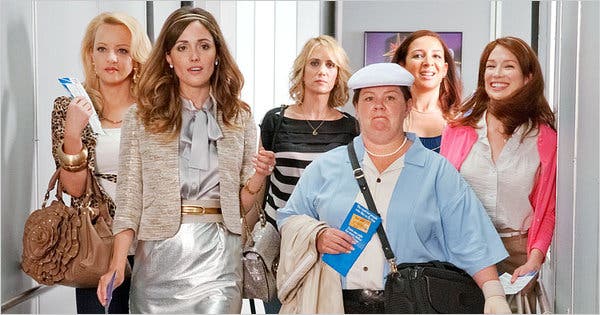Week 0 (concept)
Week 1 (outline)
Week 2 (first act)
Week 3 (first half of second act)
I’m sure some of you were hoping I would review Godzilla vs. Kong today. If you were hoping for that, I apologize. And then again, I don’t apologize. But I do apologize for making you think I would apologize. Cause I would never apologize for not watching that movie. I know we’re all starved for big-budget Hollywood entertainment but come on!
The second that little girl – King Kong’s Keeper – appeared on screen, I let out a big, “Uh oh.” First of all, nobody’s going to let a little girl near a 100 foot tall 20 ton gorilla, regardless of how much he likes her. But then the deaf thing came in and it was lights out for me.
Deaf characters are so hard to make work (they’ve become such a trope) that the only time you want to use them is if the concept encourages it. In a movie about noise, for example, A Quiet Place, a deaf character makes sense. But when you’re only giving your character an impairment to gain sympathy from the audience, that’s when it’s problematic.
Then again, these blockbusters are meant to please everyone. And I suppose that the average 10 year old doesn’t care if the screenwriter is adding an ariticial impairment to make someone likable. Still, I see tons of blockbusters that don’t stoop to this level. Marvel is good at keeping the lazy stuff out.
But none of that matters today, anyway, because we’ve got bigger problems to tackle. Yes, bigger than even giant lizards! We’re talking about the original King Kong, the second act. The act that separates the men from the boys. Casual screenwriters will often give up during the second act because it’s so hard. Real screenwriters understand that the challenge of the second act is a battle they have to get through in order to win the war.
What often happens while writing your second act is you realize you don’t have as much plot as you thought you did. As a result, you begin writing scenes you know aren’t good, hoping they’ll somehow lead you back to better scenes. But as reality sets in, each subsequent scene gets worse, not better. Eventually, you write so many bad scenes, you begin questioning the script as a whole. And in the most frustrating of scenarios, you give up.
This issue is compounded when you write a comedy because in addition to the plot falling apart, you aren’t laughing as much. And, in a desperate attempt to save the script, you try harder and harder to “write funny.” But it doesn’t work. All of it feels try-hard and, therefore, the opposite of funny.
Of course, there’s a reason why it doesn’t work. When you don’t have scenes that set up the goal, the stakes, the conflict, the scenes don’t have a point. They’re only being written in an attempt to make the reader laugh. And that’s the quickest way to ensure the reader doesn’t laugh.
But I have good news for you: This is a necessary part of the screenwriting process. Just like your characters struggle, you, the writer, will struggle. Especially in the second act. First draft second act is where a ton of writers quit. Don’t quit. There is a light at the end of the tunnel. You just have to keep driving. Don’t judge the writing. Keep getting pages down, no matter how agonizing it feels. We’ll fix the problematic sections in the rewrite.
Let’s recap where we are in the process. We’re basing our draft on a 100 page page-count. First week was pages 1-25. Second week was pages 26-50. That took us to the midpoint of the script. You should’ve written something at the midpoint that changed the course of the story in a way so that the second half of the movie feels different from the first half.
This week, we’ll be writing pages 51-75. This is known as the second half of the second act. And it’s a challenging section for many writers. However, the good news is, we know what we’re writing towards. The end of the second act (page 75) will be your character’s lowest point (the “All is Lost” moment). This is when your character will feel like giving up. They feel as if they’ve tried everything and nothing works.
The end of the second act in The Big Sick is when the parents have to make a critical decision about whether to move Emily (who’s in a coma) to a different hospital. The infection inside her body has moved to her heart. This struggle is shown through Kumail having a breakdown during one of his stand-up sets, venting to the audience how helpless he feels. It is not just the lowest moment in the movie. It’s the lowest moment OF HIS LIFE. Which may be a good way to approach your own “lowest point.”
But that might be too long of a path to walk without guidance. So let’s continue what we’ve been doing, which is to break our second half of the second act into two sequences. Both of them will be [roughly] 12 and half pages. We know what we’re doing with that second sequence. We’re building towards the “All is Lost” moment. The hero thinks, “That’s it. There’s nothing left I can do.” So you can write your second sequence with that directive in mind.
What about the first sequence, though (pages 51-63.5)? What do we do there? That depends on a couple of factors. The first is whether your midpoint is a positive one or a negative one. The second is whether your story is objective-driven or life-driven. I’ll explain the difference between objective-driven and life-driven in a second because it’s the harder lesson to learn. But let’s start with ‘positive’ vs. ‘negative.’
A positive midpoint is going to set your character off on a positive path. In the movie, “Spy,” which I mentioned last week, the midpoint shift is a positive one. Susan befriends the villain, Rayna. So as we move into the second half of the movie, the two are working together in a positive way. It doesn’t mean they don’t still encounter obstacles. In fact, one of the very first things that happen to them is they’re attacked on Rayna’s private jet. But the two of them are working together positively.
Meanwhile, Bridesmaids has a negative midpoint. This occurs when all the women try to fly to a bachelorette party and Annie (Kristin Wiig) has a meltdown that causes the plane to divert. Afterwards, Lillian (the friend who’s getting married), tells Annie that it would be best if she stayed off the wedding planning team. She’s going to let her other friend, Helen, organize everything from now on.
Since this is a negative midpoint, it sets Annie off on a negative path. Her life starts to wander. She goes on a date with the policeman to find some focus, but she freaks out that it’s going too well and sabotages the relationship. Nothing in her life is going the way she wants it to. She eventually gets out of the funk after a pep-up talk from Megan.
Now, what does “objective-driven” mean. That means your hero has a tangible objective they’re trying to achieve. In Spy, Susan is trying to locate and take down the bad guys who have the nuclear bomb. Objective driven movies are always easier to write because no matter where you are in the movie, the main character is always trying to achieve the objective. So after the midpoint of Spy, Susan gets right back in there and attempts to find the bomb. Or find the people who can lead her to the bomb.
“Life-driven” movies are tougher because there isn’t some immediate ‘object’ that the main character has to obtain. This leaves your hero in a much less active place. And it’s always harder to push your plot forward with an inactive hero. That’s where Bridesmaids finds itself. Technically, Annie doesn’t “need” to do anything after she’s booted off the wedding crew other than go back to “life.”
How do you solve this quagmire? There’s no single way. But a lot of times, what life-driven movies will do, is they’ll detour into their subplots. That’s what Bridesmaids does. Annie calls up the policeman because she’s bummed out. They go on a date. They sleep together. He wants to make breakfast. She freaks out and leaves. So that’s probably what you’ll do as well. Hopefully, you’ll have set up some subplots throughout the first half of the story that you can tackle in this section.
Bridesmaids had more subplot options if it wanted them. One of the subplots is Annie’s failed cake business. They could’ve gone to that immediately after the plane incident if they wanted to (they do so later but they could’ve easily made that a bigger focus right away). I’m just trying to help you realize you’re not limited. You have multiple options. And, if you don’t have any subplots set up, maybe still write a subplot sequence for pages 51-63.5 with the intent of setting it up in your rewrite. There’s no screenwriting law that says you can only pay things off that you haven’t already set up in THIS DRAFT. If you’re thinking three-dimensionally, you can always set up payoffs in the next draft.
I know we got technical today and some of this is confusing. But if you’re ever stuck in this section, write down the two checkpoints you have to get to – page 63 and a half and page 75. Write down what happens on those pages and then write towards those moments. If you know, in The Big Sick, that you’re going to write that scene where Kumail breaks down during his stand-up routine on page 75, that’s easier to write towards that scene than if you’re writing towards a black hole.
So there you have it. At the end of this week, we’re going to be in our third act! Just 25 pages left until we finish our first draft. How awesome is that! Until then… KEEP WRITING.



